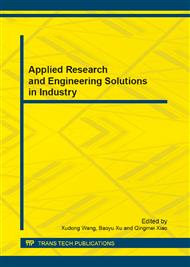p.558
p.565
p.570
p.575
p.579
p.583
p.588
p.593
p.597
Research on the Compensation of Gradient Method of Buried Metal Pipe Detector
Abstract:
In the ideal case, gradient method can obtain higher precision than other methods when detecting the buried metal pipe by detector. But the parameter of coils and signal adjusting circuits cannot be the same because of the manufacturing errors, so it will lead to much error in the actual measurement. Many field experiments have been done in order to explore the law of error and reduce measurement error. From the point of experiment, this paper verifies that the errors of detecting buried metal pipe depth have linear distribution by using the gradient method without any other pipe interference. The precision of metal pipe detector can be improved to within ±5% by linear compensation.
Info:
Periodical:
Pages:
579-582
Citation:
Online since:
February 2013
Authors:
Price:
Сopyright:
© 2013 Trans Tech Publications Ltd. All Rights Reserved
Share:
Citation:


